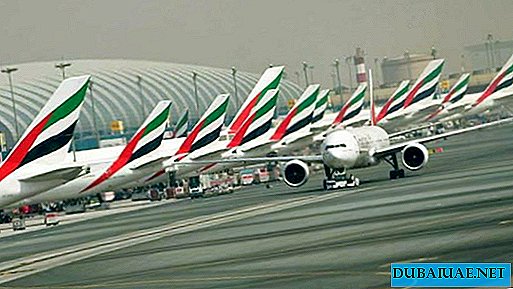The solemn meeting dedicated to the 35th anniversary of the UAE was held on December 2, 2006 in Abu Dhabi in the presence of President Sheikh Khalifa bin Zayed Al-Nahyan, rulers of the emirates, tribal sheikhs, the diplomatic corps, and journalists.

Emirates Society. First half of the last century
The Arabian Gulf coast throughout its history was considered one of the poorest areas in the world due to the scarcity of natural resources. The population of the region, constrained on the coastal strip between the desert and the sea, was semi-sedentary and mostly illiterate. Nomadic tribes made up the majority.
The absolute power on the ground belonged to the tribal sheikhs and was patriarchal-dynastic. Tribal members obeyed only their sheikhs. Sheikhs had direct access to the rulers of the emirates, who held power, being located outside the fortress walls around which urban settlements formed.
The rulers sought to enlist the support of the sheikhs in order to protect the settlements from attacks by warlike tribes. At the beginning of the last century, a layer of large merchants formed in the settled areas, which represented the most active and prosperous part of the population. They competed with the traditional ruling families, but could not dispute their power. Sheikhs of nomadic tribes completely controlled the life of their relatives. But their power and political role gradually waned.
Desert residents - Bedouins who did not recognize any laws or borders, constituted a serious military force. The tribes consisted of genera formed on the basis of family ties. Tribal sheikhs were responsible for protecting relatives from external threats and could be removed and replaced by their relatives if they did not ensure internal order, were not fair in analyzing complaints, were unsuccessful in resolving tribal feuds, and repelling threats from outside. The change of the ruling sheikhs of the tribes often occurred by force as a result of conspiracies, especially within the family. The weapon - a dagger or rifle - was one of the elements of men's clothing.
Settled settlements were formed on the coast of the bay, the inhabitants of which were engaged in fishing, pearl fishing, and trade. The Bedouins could buy here fabrics, flour, tobacco, sell livestock, wool, firewood. Some of them were engaged in the pearl industry. They needed the patronage of rulers in coastal settlements and used their guarantees in transactions with merchants. Nomads did not engage in professional trade. It is believed that they despised her. But, taking into account that Islam encourages trade, it would be more correct to admit that they did not trade, since their nomadic economy did not give surpluses, and simply did not have money. Incidentally, the most common currency was the Indian rupee.
The rulers appointed in the oases, which served as the bases of the nomadic population, their deputies from the leaders of strong and reliable tribes who collected taxes for them as part of the date and cattle harvest. This situation existed throughout the Arabian Peninsula.
Cities began to take shape only in the 20s of the last century. Dubai, Sharjah, Ras al-Khaimah, Abu Dhabi were centers of pearl fishing, traded with India and Iran. Sheikhs of the most powerful tribes were elected rulers in cities.
There were no administrative structures. Under the rulers councils acted. The Soviets are an old political phenomenon on the Arabian Peninsula. Initially, all residents of each particular district took part in them. Then their composition was limited by sheikhs and authoritative citizens. They resolved current issues. All members of the tribe were required to comply with their decisions.
Rulers in cities collected taxes from merchants. They supported the leaders of loyal tribes with money, presented them with gifts, and used tribes to achieve political goals.
The vast majority of merchants in the cities were Iranians and Indians. They held strong positions in society, were its foremost layer, but did not use the location of the population.
In the 30s of the last century, the total number of sedentary urban residents in the territory that became part of the UAE reached approximately 45 thousand people. Most of them were pearl hunters. Women did not play an independent role in the economic life of society, although some of them went fishing with their husbands.
“The majority of the sedentary population exploited by ship owners lived in absolute poverty at the beginning of the 20th century. The lowest social level was occupied by slaves,” notes Dr. Muhammad Abdullah al-Mutauua, a Dubai sociologist. In his book "Development and Social Changes in the Emirates," the scientist states that by the time the UAE was created, the country was at the tribal system. In the cities there was slavery. Slaves were imported from Muscat, where there was a slave market, which traded people brought mainly from Zanzibar, where the Omanis dominated. For sale were children and adolescents aged 7 to 14 years, mostly women. African blacks from central Africa cost less than a hundred Saudi riyals, the price of Ethiopians reached 300. According to local sources, the cost of a slave could reach 3,000 riyals. Women were valued more than men. At the time of the creation of the state of the UAE, the country was on the tribal system stage on the coast of the bay. In the cities there was slavery. Slaves were imported from Muscat, where there was a slave market that traded in people brought mainly from Zanzibar imported annually, according to various sources, from 4,000 to 12,000 slaves. Local sources note that the attitude towards slaves in the region was merciful, they were never chained to iron. And where was it to get the iron shackles, which could cost more than a slave.
Slaves were used for fishing, building ships, grazing and household chores. The slave trade was a lucrative trade. But only a few coastal residents could buy an employee. Most of the slaves were bought by the Saudis, who were much richer than the locals.
In the Emirate oasis of Al-Buraimi, whose population consisted of local, Omani and Saudi subjects, slaves were sold in the main An-Nahhasa market. In a letter to emirate historians that became known to Emirates, the brother of the founder of the UAE, Sheikh Zayed Sheikh Hazza bin Sultan, dated August 1951, refers to the name of one of the local slavers Muhammad bin Murad. Slaves still sold alive in Al-Buraimi in the 1950s and who became freedmen a few years later still survive. Slavery continued until the second half of the last century. In Saudi Arabia, slavery was abolished only in 1962.
British sources admit in their documents that in the territory of today's Emirates, "the slave trade, of course, continued until the middle of the 20th century." The British, who controlled the Persian Gulf coast from the first decades of the 19th century, demanded the registration of slaves, when selling live working goods they did not recommend separating families and leaving children without parents.
The urban population was divided into layers of sheikhs, traders and pearl hunters. In Sharjah in 1927, the then-major merchant Ibrahim al-Madfaa issued a publication called Oman, which discussed the situation in the region. In the same emirate, attempts were made to organize regular education, but there was no one to work in schools. Teachers had to be invited from neighboring monarchies.
In 1934, under the family of the authoritative city dweller Rashid bin Butty, by agreement between the ruler and the influential families of the emirate, a council acted, whose members exchanged views on issues of internal life. Some influential Sharjah families whose representatives were members of the council, such as the Tarjam family, Al-Madfaa, still play an important role in the life of the emirate. At the shop of Ibrahim al-Madfaa, something similar to an arbitration court worked, sometimes examining, in the presence of the ruler of Sharjah, commercial litigation. The annual income of the ruler of Sharjah, which at that time was the wealthiest emirate, reached 29 thousand Indian rupees. The ruler received 15 thousand rupees from catching pearls, collecting 15 rupees from each “Gauwas” (diver) and 10 rupees from each “Siberian” that pulled the catcher out of the water. The remaining funds came from taxation of the population.
Agriculture was concentrated in oases, the inhabitants of which barely provided for themselves, working on land in the winter and pearl crafts in the summer. The lands belonged to the rulers and sheikhs of the tribes. Along with the dates in Ras al-Khaimah and Al Fujairah, bananas, oranges, small lemons and some vegetables were grown in the oases of Al-Buraimi, Liva and Az-Zeid.
The shepherds were respected people. In 1934, the Bani Yas tribe, which included one and a half dozen genera, had 46,450 camels. In different tribes, from 2 to 7 camels and from 4 to 10 goats and sheep per person.
Pearl fishing was the main occupation of the population in the summer. At the beginning of the century, more than 1,200 wooden ships and over 22 thousand sailors were at the disposal of residents. The third part of this fleet belonged to the inhabitants of Abu Dhabi, the fourth part belonged to Dubai. Ras al-Khama and Sharjah accounted for more than 350 vessels. Umm al-Quwain and Ajman each had a few dozen. There is no information about the Fujairah fleet of that time, fenced off by the mountains from the rest of the emirates.
Pearls were fished from May to September until the discovery of oil. He was engaged in the majority of the population. They said: "As-lettuce - ibada wa-l-gous - hell" (Prayer is faith, and diving is a common thing). Catchers were attacked by sharks and other predatory fish and exploited by shipowners. Suffered from inflammation of the eyes that were treated with antimony.

Exits to the sea were funded by shipowners. They hired people and bought food. The shipowner of Naukhaz was also the captain of the ship. He was omnipotent and strict with divers, suppressing any discontent. The diver (Gauwas) was essentially his slave. Slaves, as such, were also used in the fishery. They were hired by slave owners. Slaves, as a rule, were divers, and free "sibs" pulled them out of the water.
The day of going to sea was called “rakba” or “dash”, the last day - “radda” or “ouda”. Places of crafts were not assigned to any tribes. Their organization was exclusively the privilege of the indigenous population. Before the start of the main season, some residents went to the "khanjiya" - fishing near the coast, which lasted 30-40 days. Separate vessels remained at sea until October for "cold fishing".
Assistant "nauhazy" called "mashdy". He was the trustee of the shipowner and was responsible for discipline among fishers. The working day lasted from sunrise to sunset. The crews included “sibs” - draggers who lifted the fishermen from the bottom of the sea by the rope, “yallases” who opened shells, “tababs” - boys who made tea for the team and helped “yallases”, and “radiophs” - youths who were former assistants and apprentices of the "sibs" who were preparing to take their place or become divers.
The pearl industry was held in the hands of large merchants who financed the fishing trips to the sea. There were also small traders - "tauuashi". Every day they bought fresh goods directly at sea from ship owners.
On the Abu Dhabi-owned island of Delma, which is located near the most pearl-bearing "girats" (shallows), the pearl market worked. Pearls were sorted by weight, color, shape and size. In Dubai, Abu Dhabi and Sharjah, about 1,000 foreign traders bought up prey for catchers, among which Iranians and Indians predominated. More than half of these merchants concentrated in Dubai. In Ajman, Ras al-Khaimah and Umm al-Qaiwain, they numbered dozens. Al Fujairah did not participate in this trade.
Pearl fishing provided 80% of the income of the coastal population. According to local historians, catching fish eyes of the depths of the BB, as catchers called pearls, yielded from one and a half to two million pounds a year in the first one and a half decades of the 20th century. By 1926, revenues had fallen by about 10 times, and through for two decades, they barely exceeded £ 60,000 a year, and the industry was undermined by the invention of Japanese artificial pearls, the changes that took place in India after World War II and the discovery of Arabian oil.
Along with pearl fishing and fishing, shipbuilding developed. Its main center was Ras al-Khaimah, which competed with Bahrain and Kuwait. The tree was imported from abroad. For catching pearls they made "sambuci", for fishing - "shui", and for trading purposes - "buley".
The possibility of oil production was discussed at the beginning of the 20th century. In 1908, it was discovered in commercial quantities in southern Iran in the Mesjid Suleiman region. In 1911, Bahrain raised the question of the search for oil before the British authorities. In 1934, its production began in this island emirate, which recently became a kingdom. Thanks to the "oil apron" Manama, where the first light bulb on the Arabian Peninsula lit up, immediately became a leader in socio-economic and cultural development. She still maintains the position of the financial center of the region.
In the early 1920s, the rulers of all the emirates of the Persian Gulf sent messages to representatives of the British authorities with proposals for the exploration of local subsoil to search for oil. On the territory of the modern emirate state, the ruler of Sharjah, Sheikh Khalid bin Ahmed, was the first to offer the British to search for oil. “My goal in writing this letter is to welcome you and ask about your health,” he wrote to a British resident. “You are not unknown that I write this message of my own free will. I assure you that if oil is found in my region, "I will not grant a concession to foreigners, except for persons indicated by the British government. That is what should be said."
The appeal has been reviewed. The emirate of Abu Dhabi was the last to write such a letter. But the first oil in commercial quantities was found not in Sharjah, but in Abu Dhabi. And this happened only after a few decades. The wanderings of the emirate nomads in the hot, deserted campsites ended only in the last quarter of the last century.
Victor Lebedev









